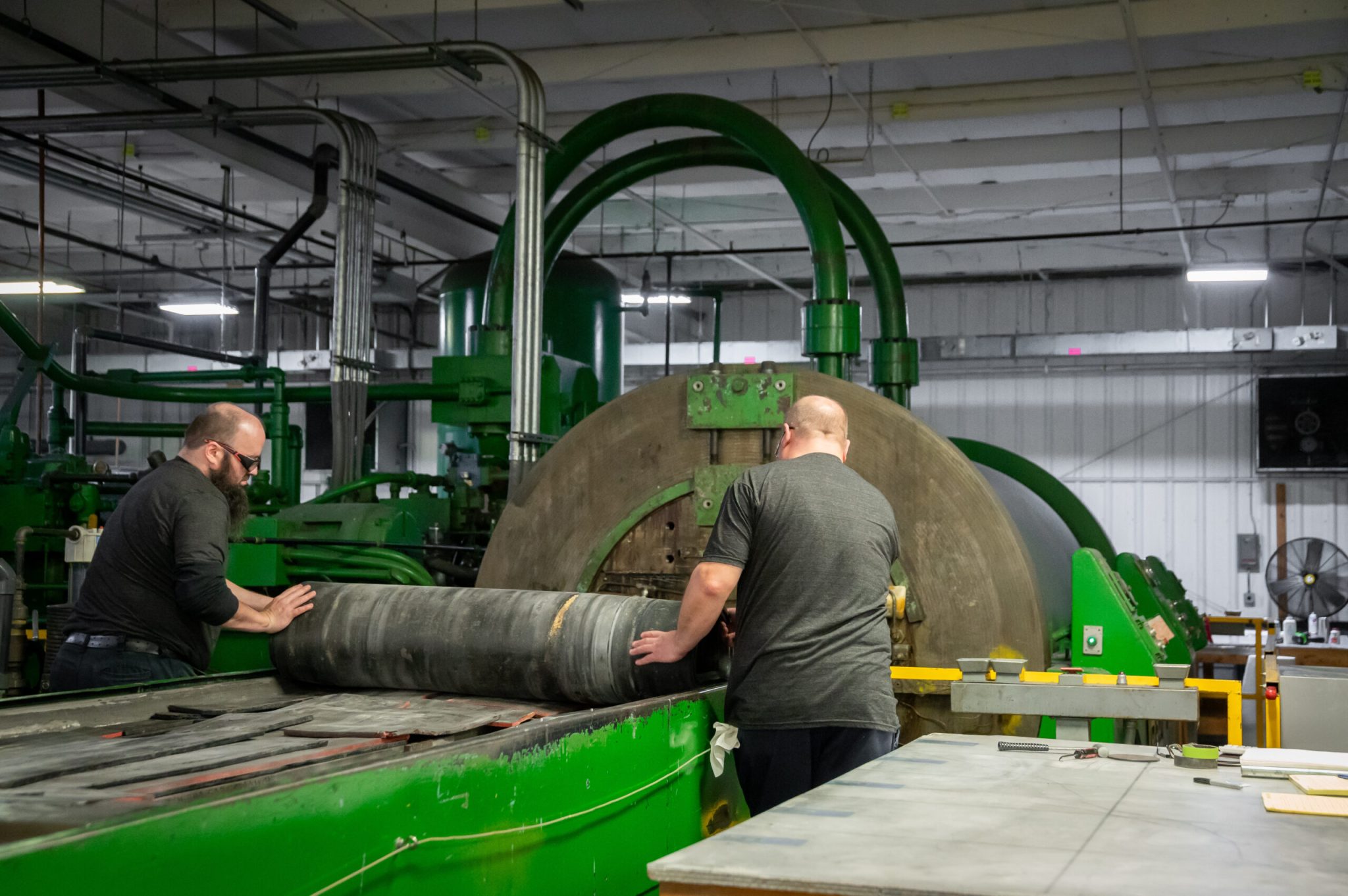By Bill Carson | February 18, 2024
Hydroforming is a unique and versatile metal forming process widely used in the aerospace industry for its ability to produce complex shapes with a single tool, in a single setup., complex shapes with excellent structural integrity. Below, we’ll embark on an exploration of aerospace hydroforming, shedding light on its processes, applications, materials, and the recent advancements that underscore its crucial role in aerospace manufacturing.

At its core, hydroforming is a technique that uses high-pressure hydraulic fluid to shape metals into precise, complex configurations. This method is especially beneficial in industries where the strength-to-weight ratio is a critical factor, such as aerospace. This production process is an excellent choice for high-mix, low-volume (HMLV) manufacturing—producing a high variety of products in small quantities.
There are two primary types of hydroforming: sheet hydroforming and tube hydroforming. Sheet hydroforming involves pressing a metal sheet into a cavity die or over an external die using a high-pressure hydraulic fluid. Tube hydroforming expands a metal tube into a desired shape using the same fluid pressure technique. Both processes offer distinct advantages, but sheet hydroforming in particular is prized for its ability to easily form compound contours with varying bend angles. Hydroforming accomplishes this without the need for expensive matched-metal die sets often seen in stamp forming.
Aerospace manufacturing sets a high bar for part precision, strength, and weight. Hydroforming meets these stringent requirements by enabling the production of complex shapes that—when used with the appropriate material— are both light and strong. Applications range from structural components, such as fuselage frames and wing ribs, to smaller, intricate parts like ducts and brackets and critical elements such as engine parts.
Material selection is crucial in aerospace hydroforming, with aluminum and carbon steel being among the most commonly used due to their favorable properties, such as malleability and strength. Expert-level facilities and partners can also hydroform additional materials, such as stainless steel.
Each material’s characteristics, including formability and resistance to stress and corrosion, play a significant role in determining its suitability for specific aerospace applications. While all these materials are ideal for the high-stress environment of aerospace applications, offering the perfect balance between durability and weight reduction, you should collaborate with your aerospace manufacturing partner for specific material recommendations.
The aerospace hydroforming process begins with careful planning and design, followed by the selection of suitable materials. The actual forming process involves placing the metal blank into the hydroforming press, in which the sheet metal is forced to take the shape of only a single rigid die by the action of fluid pressure — which acts through a rubber diaphragm.
One key advantage of this process is that only a single rigid die is needed, making it possible to form more complex shapes wrinkle-free and with material thinning as low as 10%. The complexity of the shape and the material chosen will also affect the rate of thinning.
Once the press operation has completed, subsequent steps such as trimming, heat treatment, and finishing processes can be employed to further enhance the part’s properties and appearance. Quality assurance is the final step, and one of the most important.
Quality and testing are paramount in aerospace hydroforming given the high stakes for the end product and industry. Stringent controls and certifications are a must in the industry to ensure every component meets the highest standards of safety and performance.
Challenges such as cost, material limitations, and the need for specialized equipment and expertise can pose significant hurdles. Recent innovations in hydroforming technology, such as improved hydraulic systems and computerized control software, have significantly enhanced the efficiency and accuracy of the process, but have added complexity. This underscores the importance of partnering with experienced and innovative hydroforming specialists capable of navigating these issues.
At Re:Build Cutting Dynamics, we’re proud to stand at the forefront of aerospace hydroforming innovation. Our extensive capabilities in aerospace manufacturing and our position within Re:Build Manufacturing position us to tackle the most demanding projects.
We understand the important role our parts play in the aerospace industry and we’re committed to upholding high-quality standards. Our dedication to quality is proven by our certifications in both AS9100 and ISO 9001:2015. We provide complete traceability of every component by maintaining a digital record and certification system for parts.
Re:Build Cutting Dynamics has more than 15 years of experience in hydroforming; We integrated our first hydroforming center in our Avon Lake, Ohio facility in 2008. Our in-house tooling capabilities combined with the redundancy of multiple presses enables us to offer a large production capacity for a faster response to client needs. Our team also specializes in low volume production, which means we can perform smaller run production of components with distinctive efficiency.
Ready to explore how we can elevate your aerospace hydroforming processes?
Connect with our team today to learn more.